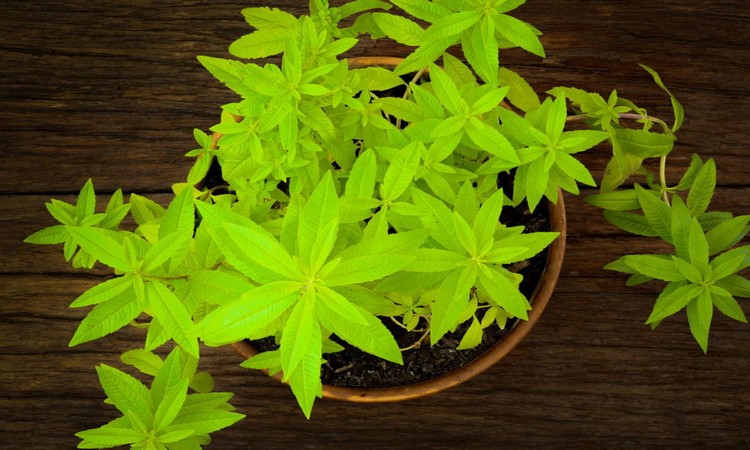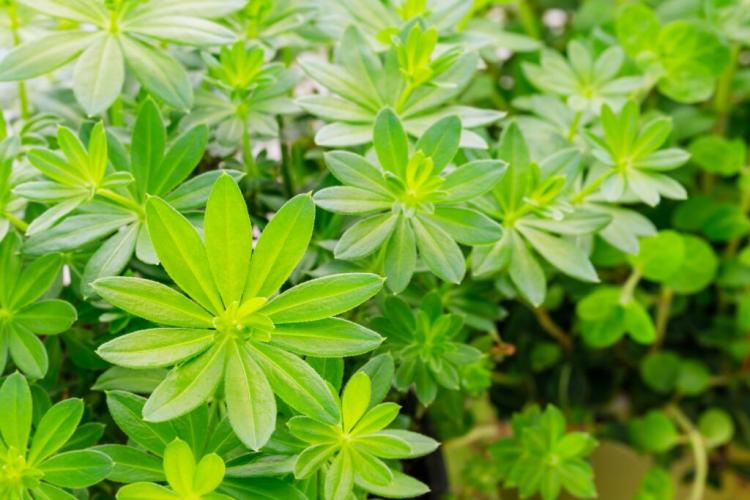Lemon Verbena: All About Planting, Care And Propagation
Lemon verbena should find a place in your garden not only because of the fragrance. We reveal what to consider when planting, care.
Lemon verbena (Lippia citriodora) is considered the refreshing herb par excellence. It is also known as “lemon bush” or “fragrant verbena” (French: verveine odorante) and belongs to the Verbenaceae family.
Just a light touch on the leaves releases a refreshing citrus aroma. But even though the scent is strongly reminiscent of lemons, lemon verbena is not more closely related to the lemon tree, which, like many other citrus plants, belongs to the rue family (Rutaceae).
Lemon Verbena: Origin And History
Table of Contents
Verbena originated in subtropical regions of South America and was not brought to Europe until the late 18th century. The obsolete generic name Aloysia commemorates Maria Luisa Teresa de Parma (1751 – 1819), the wife of the then Spanish King Carlos IV, so even today some foreign-language names of lemon verbena contain a Louise element, as shown by the names “Hierba Luisa” (Herb of Luise) in Spain and “Luiserlkraut” in Austria.
Lemon verbena is an attractive container plant for the patio or balcony, but it has limited hardiness. The perennial and deciduous shrub reaches growth heights of about one to two meters in temperate climates in Europe. Under favorable conditions, lemon verbena can grow even taller. A visual eye-catcher is the dainty flowers, whose variety of colors can range from white to pink to purple.
Planting Lemon Verbena
Lemon verbena thrives best in a warm, sunny, and sheltered spot. You can grow the plant exclusively in a pot or plant it in your garden bed in locations with milder climates.
Planting Lemon Verbena In The Bed
Planting should be done already in the spring so that the roots can form well until autumn. In its native habitat, lemon verbena prefers loose, neutral to slightly alkaline soil without waterlogging. The vegetation period in our country is from May to November. It flowers in August and is mainly pollinated by insects such as butterflies and bumblebees. However, the seeds ripen only in long, warm summers. Due to its low frost tolerance, overwintering in a protected environment is recommended.
Planting Lemon Verbena In A Pot
For pot and tub culture, common substrates that are also used for classic balcony plants are sufficient. A sunny to semi-shaded place in a pot on the terrace or in a pot on the windowsill is ideal. Depending on its growth, lemon verbena should be repotted into a larger container about every one to two years.
Propagating Lemon Verbena
Even though suitable seeds are available in specialized stores, propagation by seed is extremely difficult. Therefore, propagation by cuttings is usually preferred.
Cuttings
In early summer, cut about 6 inches long cuttings from the woody branches and put them in pots with growing soil. Rooting can be encouraged by covering them with foil, as the cuttings like warm temperatures between 64 and 77 °F. Once they have achieved the desired rooting, the cuttings can be transplanted into pots. Then patience is needed once again, because only when the plantlets have reached a size of about 10 centimeters, the top may be cut for the first time. This will help the shrub branch out and grow bushier.
Sowing
Sowing can be done as early as February and March in the greenhouse or on the windowsill. A permeable substrate, which can nevertheless store water well, is optimal for growing. The seeds are placed in the soil at a sufficient distance of about 0.3 to 0.7 inches deep. Lemon verbena is a light germinator, so the seeds should only be lightly covered with soil. Then place the planter in a bright, warm place without direct sunlight. Regular moistening should not be forgotten so that the seeds begin to germinate. A transparent cover (for example, made of glass) can provide optimal temperature and humidity conditions in this regard. If everything has worked out, the first seedlings should appear after a few weeks. Plants that are too dense can then be pricked out.
Care Lemon Verbena
The lemon verbena is considered to be very undemanding, but nevertheless, it is important to pay attention to some aspects of care in order to enjoy your own lemon shrub for as long as possible.
Watering Lemon Verbena
The soil should always be kept slightly to moderately moist. Excessive watering should be avoided, as this will encourage waterlogging and make the plant more susceptible to disease. Occasional dry soil does not bother it, but complete drying of the substrate should be avoided.
Fertilize Lemon Verbena
Regular fertilizing between April and August promotes lush, bushy growth. Especially suitable are primarily organic slow-release fertilizers, which provide an adequate supply of nutrients over several weeks or even months. The fertilizer is decomposed by the soil organisms and is thus gradually available for the plant.

Cut Lemon Verbena
In the fall, before the first frost makes itself felt, you can cut back lemon verbena to two eyes. New growth usually occurs at the tips of the shoots. If the branches were left long, they would be bare at the bottom and new shoots would only grow on the top two eyes. More pruning can also be done during the season if needed for harvesting.
Overwintering Lemon Verbena
Lemon verbena is considered to be extremely sensitive to frost. However, under good conditions and in particularly sheltered locations, it can even survive a cold winter outdoors. For this, the branches should be cut back to a few eyes in October. A layer of straw about 12 inches thick or covering with a garden fleece provide the necessary protection against the cold. Well wrapped up, the lemon verbena can thus survive in the garden bed until mid-April.
However, if you want to be on the safe side, bring the tub or pot plant indoors before the first frost. Provided you do not cut back the lemon verbena in the fall, a light wintering at about 41 °F in the cellar, shed or stairwell is ideal. However, darker, cool rooms have the advantage that the plant will shed its leaves on its own, reducing the risk of rot. Even when cut back, the plant can be overwintered in the dark. Since the plant does not bear leaves during hibernation, it does not need light. However, it should be watered a little from time to time.
The lemon verbena sprouts again at constant temperatures of about 59 °F. Therefore, starting in March, the plant can be allowed to sprout in a moderately heated room. After about ten days, the first tender leaves and shoots should appear. If no more frost is expected, the lemon verbena can go outside again in mid-May. Intensive watering and fertilizing give the plant new vitality and strengthen it for the coming year.
Harvest Lemon Verbena
The leaves of lemon verbena can be harvested from May to September. For this purpose, individual leaves can be plucked off or whole branches can be cut a few centimeters above the ground. Only healthy parts of the plant are harvested. Withered, pitted or discolored leaves should be removed. Fresh leaves are excellent for making herbal lemonades or enhancing desserts.
Unfortunately, there is too little light in our area during the winter to harvest fresh lemon verbena year-round. The plant would suffer and pest infestation, as well as stunted growth, would be the result. If you still don’t want to do without lemon verbena, you should build up a sufficient supply during the summer months. The plant can then be cut back in the fall and sent into well-deserved winter dormancy.
You might so like: Why Causes For Yellow Leaves On Your Lemon Tree?
Storing Lemon Verbena
The fresh leaves of lemon verbena can be frozen as well as preserved in oil. Probably the easiest method of preserving lemon verbena, however, is to dry it. The best way is to strip the fresh leaves from the cut branch. Then lay them out loosely on a cloth or on a newspaper. In an airy, warm place, the leaves will dry within a week. However, direct sunlight should be avoided. The slower and gentler the drying, the more likely the green color and aroma will be preserved. The drying process is only complete when the herbs crackle when squeezed. If there is still too much residual moisture, mold could form during storage. Stored in an airtight, opaque container, the lemon aroma is preserved for a long time.
Lemon Verbena: Ingredients And Use
Lemon verbena contains an essential oil in all parts of the plant, the fresh scent of which is reminiscent of lemon. The intensity of the scent of the leaves is considerably stronger than most other similar-smelling plants. If you want to bring the fresh scent into your home, fill small herbal sachets with the dried herb. It can also be used as an insect repellent at the same time, because mosquitoes, flies and co. don’t seem to like the scent very much.
Lemon verbena is considered antispasmodic, appetizing and digestive. In addition, it has a mild calming effect on nervousness and insomnia. A good evening tea made from lemon verbena, also known as “verveine”, is very popular in France. A cold tea made from lemon verbena is often called “vervain tea” in our country. Although verbena officinalis is closely related to the fragrant verbena, it tastes extremely bitter.

For an aromatic tea, pour 1 tsp of the crushed leaves of verbena over a quarter of a liter of water and let it steep for about 5 minutes. Chilled, it tastes wonderful in summer as an iced tea and is used to flavor other drinks. In the kitchen, a kind of spinach can be prepared from the fresh leaves. Much more common, however, is its use as a seasoning herb. The lemony aroma harmonizes wonderfully with fish and poultry. But it is also used for seasoning salads and flavoring desserts, such as pudding or ice cream. If you want to benefit from the taste of lemon verbena in winter, it is best processed into syrup, jelly, or pesto.
In addition to lemon verbena, numerous other herbs grow in our home gardens, from which you can make your own tea. In our article, you will find an overview of the best herbal tea blends from your own garden.






